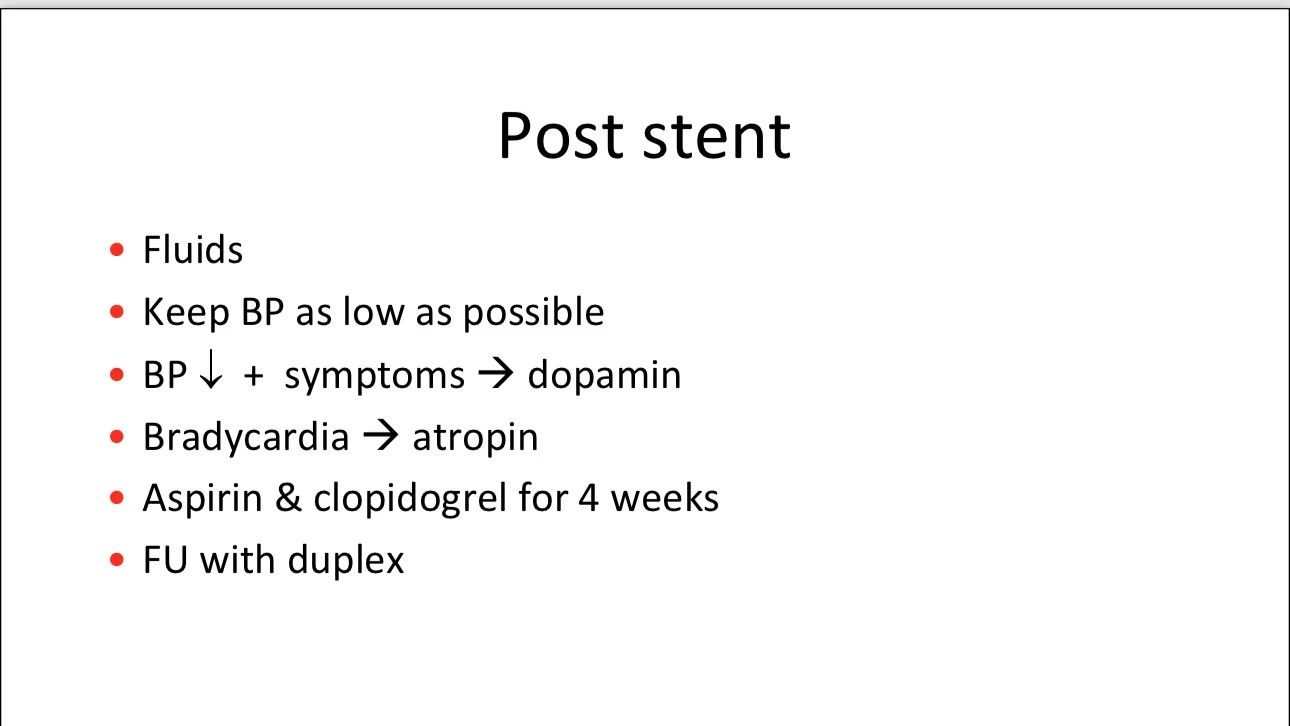Author: Prof. Dr. Horst Sievert
Institution: Frankfurt Cardiovascular Center, Germany
Summary
This presentation outlines specific methods to prevent and manage complications during carotid artery stenting (CAS). Dr. Sievert provides a detailed step-by-step analysis of preoperative preparation, lesion crossing, embolic protection device usage, stent placement, and postoperative management, sharing practical techniques to minimize intraoperative complications. The study emphasizes that thorough patient preparation, meticulous surgical technique, and postoperative management are essential for successful CAS outcomes.
Key Procedural Steps and Techniques
• Medication Preparation: Discontinue medications that induce bradycardia (e.g., beta-blockers, calcium channel blockers) preoperatively, and maintain patient hydration during the procedure. Administer heparin preoperatively and inject atropine before balloon inflation to prevent bradycardia.

• Lesion Crossing: To reduce embolization risk, avoid contacting plaque with the guidewire when crossing complex lesions. In challenging lesions, consider proximal occlusion to minimize risk.

Selection and Use of Embolic Protection Devices
• Proximal vs. Distal Protection Devices: Choose the appropriate protection device based on anatomical structure, plaque burden, and external carotid artery status. Proximal protection devices are particularly effective in preventing embolization in high-plaque load and multi-branch lesions.

• Stent Placement and Follow-Up Management: After stent placement, perform adequate post-dilation and avoid moving the filter or guidewire until the stent position is confirmed, reducing risks of vasospasm and dissection. Postoperatively, maintain antiplatelet therapy with aspirin and clopidogrel for four weeks, and conduct follow-up ultrasound to ensure vessel patency.

Case Analysis
• Case Examples: Dr. Sievert presents multiple cases of intraoperative complications such as spasm, pseudo-spasm, and distal dissection, demonstrating effective management through recanalization and localized thrombolysis, ensuring good patient recovery.







Conclusion
1. Medication preparation, meticulous operation, and postoperative management are key to preventing complications in CAS.
2. Proximal protection devices offer significant advantages in patients with complex anatomy and high-risk plaque.
3. Precise application of techniques effectively reduces surgical risks, providing a safer treatment option, especially for high-risk patients.
Contact Us
• Email: endovascluar@simtomax.cn
The English content has been synchronized with the Vasco Knight account. For more international information, please visit:
• Facebook: Vasco Knight
• Instagram: knight_vasco
Let’s safeguard health together and showcase your brilliance to the world!


